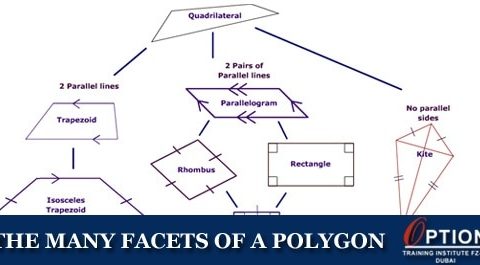- Have any questions?
- +971 509267126
- +971 551207626
- enquiry@optioneducation.ae
Divisibility Rules: Simplify GMAT Prep

Walk the GMAT Reading Comprehension Passages with a Plan in Mind
March 4, 2017
Time to start the Prep: Application Deadlines to watch out for
June 16, 2017As the Quantitative part of the GMAT focuses on the basics of mathematics, it’s important to know divisibility rules. So let’s discus the divisibility rules for some numbers that you need to be known while preparing for the GMAT.
Divisible by 2: All numbers ending with 2 or its multiples (0, 4, 6 and 8) are divisible by 2
Example: 124 is divisible by 2 as it is ending with multiples of 2
Divisible by 3: A number is divisible by 3 if the sum of its digits is divisible by 3
Example: 165 divided by 3 as its sum (1+6+5= 12) is multiple of 3
Divisible by 4: A number is divisible by 4 if its last two digits form a number that is divisible by 4
Example: 2116, as 16 is divisible by 4 so 2116 is divisible by 4
Divisible by 5: A number is divisible by 5 if the number ends in 5 or 0
Example: 100 and 125 are divisible by 5
Divisible by 6: A number is divisible by 6 if it is divisible by both 2 and 3
Example: 948 is even so it is divisible by 2 and the sum of its digits is 21 that is also divisible by 3
Divisible by 7: To determine if a number is divisible by 7, take the last digit of the number, double it and subtract the doubled number from the remaining number. If the result is evenly divisible by 7 (e.g. 14, 7, 0, -7, etc.), then the number is divisible by seven. This may need to be repeated several times.
Example: 3101, last digit is 1 so double it (1 x 2=2) then subtract 2 from 310,310 – 2 =308 then again take last digit that is 8 , double it (8 x 2=16) then from 30, that is 30-16=14. Hence 14 is multiple of 7 so 3101 is divisible by 7
Divisible by 8:
A number is divisible by 8 if its last three digits form a number that is divisible by 8
Example: 31248, as 248 is divisible by 8 so 31248 is divisible by 8
Divisible by 9: A number is divisible by 9 if the sum of its digits is divisible by 9
Example: 567 is divisible by 9 as its sum (5+6+7=18) is multiple of 9
Divisible by 10: A number is divisible by 10 if it ends in 0.
Example: 120, 1000 etc.
Divisible by 11: If you sum every second digit and then subtract the result from the sum of all other digits and the answer is 0 or multiples of 11, then the number is divisible by 11.
Example: 9,488,699 is divisible by 11, sum every second digit: 4+8+9=21, then subtract the sum of other digits: 21-(9+8+6+9) =-11, is divisible by 11, hence 9,488,699 is divisible by 11
Divisible by 12:
If the number is divisible by both 3 and 4, it is also divisible by 12.
Example: 324 as it is divisible both 3 and 4
Divisible by 13: To determine if a number is divisible by 13, take the last digit of the number , multiply by 4 and add the result to remaining number, if the result is evenly divisible by 13 (e.g. 26, 0, -13, etc.), then the number is divisible by 13. This may need to be repeated several times.
Example: 50661
Step 1: take the last digit i.e. 1, multiply it by 4(1×4=4) then add the result to remaining digits 5066.
5066+4=5070
Step 2: Take the last digit i.e. 0, multiply it by 4(0x4=0) then add the result to remaining digits 507.
507+0=507
Step 3: Take the last digit i.e.7, multiply it by 4(7×4=28) then add the result to remaining digits 50.
50+28=78
78 is multiple of 13, so 50661 is divisible by 13.
Simplify your prep exercise by focusing on such simple but vital details of math. Attention to detail does in the long run facilitate preparation and contribute immensely to achieving a good score. At Option GMAT DUBAI we focus significantly on making the prep interesting, enlightening and in the long run effective.




